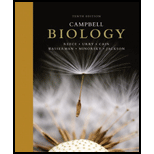
Campbell Biology (10th Edition)
10th Edition
ISBN: 9780321775658
Author: Jane B. Reece, Lisa A. Urry, Michael L. Cain, Steven A. Wasserman, Peter V. Minorsky, Robert B. Jackson
Publisher: PEARSON
expand_more
expand_more
format_list_bulleted
Textbook Question
Chapter 46.5, Problem 2CC
In what ways are tubal ligation and vasectomy similar?
Expert Solution & Answer
Want to see the full answer?
Check out a sample textbook solution
Students have asked these similar questions
Briefly state the physical meaning of the electrocapillary equation (Lippman equation).
Explain in a small summary how:
What genetic information can be obtained from a Punnet square? What genetic information cannot be determined from a Punnet square?
Why might a Punnet Square be beneficial to understanding genetics/inheritance?
In a small summary write down:
Chapter 46 Solutions
Campbell Biology (10th Edition)
Ch. 46.1 - Compare and contrast the outcomes of asexual and...Ch. 46.1 - Parthenogenesis is the most common form of asexual...Ch. 46.1 - WHAT IF? If a hermaphrodite self-fertilizes, will...Ch. 46.1 - Prob. 4CCCh. 46.2 - How does internal fertilization facilitate life on...Ch. 46.2 - What mechanisms have evolved in animals with (a)...Ch. 46.2 - Prob. 3CCCh. 46.3 - Why might frequent use of a hot tub make it harder...Ch. 46.3 - Prob. 2CCCh. 46.3 - WHAT IF? If each vas deferens in a male was...
Ch. 46.4 - How are the functions of FSH and LH in females and...Ch. 46.4 - How does an estrous cycle differ from a menstrual...Ch. 46.4 - WHAT IF? If a human female begins taking...Ch. 46.4 - Prob. 4CCCh. 46.5 - Prob. 1CCCh. 46.5 - In what ways are tubal ligation and vasectomy...Ch. 46.5 - Prob. 3CCCh. 46 - Would a pair of haploid offspring produced by...Ch. 46 - Identify which of the following, if any, are...Ch. 46 - How does the difference in size and cellular...Ch. 46 - Prob. 46.4CRCh. 46 - Prob. 46.5CRCh. 46 - Prob. 1TYUCh. 46 - In male mammals, excretory and reproductive...Ch. 46 - Prob. 3TYUCh. 46 - Prob. 4TYUCh. 46 - Prob. 5TYUCh. 46 - Prob. 6TYUCh. 46 - Prob. 7TYUCh. 46 - Prob. 8TYUCh. 46 - DRAW IT In human spermatogenesis, mitosis of a...Ch. 46 - Prob. 10TYUCh. 46 - SCIENTIFIC INQUIRY You discover a new egg-laying...Ch. 46 - WRITE ABOUT A THEME: ENERGY AND MATTER In a short...Ch. 46 - SYNTHESIZE YOUR KNOWLEDGE A female Komodo dragon...
Knowledge Booster
Learn more about
Need a deep-dive on the concept behind this application? Look no further. Learn more about this topic, biology and related others by exploring similar questions and additional content below.Similar questions
- Not part of a graded assignment, from a past midtermarrow_forwardNoggin mutation: The mouse, one of the phenotypic consequences of Noggin mutationis mispatterning of the spinal cord, in the posterior region of the mouse embryo, suchthat in the hindlimb region the more ventral fates are lost, and the dorsal Pax3 domain isexpanded. (this experiment is not in the lectures).a. Hypothesis for why: What would be your hypothesis for why the ventral fatesare lost and dorsal fates expanded? Include in your answer the words notochord,BMP, SHH and either (or both of) surface ectoderm or lateral plate mesodermarrow_forwardNot part of a graded assignment, from a past midtermarrow_forward
- Explain in a flowcharts organazing the words down below: genetics Chromosomes Inheritance DNA & Genes Mutations Proteinsarrow_forwardplease helparrow_forwardWhat does the heavy dark line along collecting duct tell us about water reabsorption in this individual at this time? What does the heavy dark line along collecting duct tell us about ADH secretion in this individual at this time?arrow_forward
arrow_back_ios
SEE MORE QUESTIONS
arrow_forward_ios
Recommended textbooks for you
 Human Heredity: Principles and Issues (MindTap Co...BiologyISBN:9781305251052Author:Michael CummingsPublisher:Cengage Learning
Human Heredity: Principles and Issues (MindTap Co...BiologyISBN:9781305251052Author:Michael CummingsPublisher:Cengage Learning Human Physiology: From Cells to Systems (MindTap ...BiologyISBN:9781285866932Author:Lauralee SherwoodPublisher:Cengage Learning
Human Physiology: From Cells to Systems (MindTap ...BiologyISBN:9781285866932Author:Lauralee SherwoodPublisher:Cengage Learning Human Biology (MindTap Course List)BiologyISBN:9781305112100Author:Cecie Starr, Beverly McMillanPublisher:Cengage Learning
Human Biology (MindTap Course List)BiologyISBN:9781305112100Author:Cecie Starr, Beverly McMillanPublisher:Cengage Learning Biology 2eBiologyISBN:9781947172517Author:Matthew Douglas, Jung Choi, Mary Ann ClarkPublisher:OpenStax
Biology 2eBiologyISBN:9781947172517Author:Matthew Douglas, Jung Choi, Mary Ann ClarkPublisher:OpenStax

Human Heredity: Principles and Issues (MindTap Co...
Biology
ISBN:9781305251052
Author:Michael Cummings
Publisher:Cengage Learning

Human Physiology: From Cells to Systems (MindTap ...
Biology
ISBN:9781285866932
Author:Lauralee Sherwood
Publisher:Cengage Learning


Human Biology (MindTap Course List)
Biology
ISBN:9781305112100
Author:Cecie Starr, Beverly McMillan
Publisher:Cengage Learning

Biology 2e
Biology
ISBN:9781947172517
Author:Matthew Douglas, Jung Choi, Mary Ann Clark
Publisher:OpenStax

The Human Reproductive System; Author: Professor Dave Explains;https://www.youtube.com/watch?v=TucxiIB76bo;License: Standard YouTube License, CC-BY